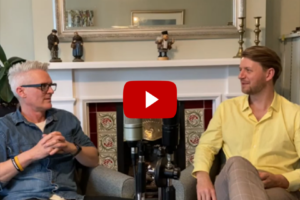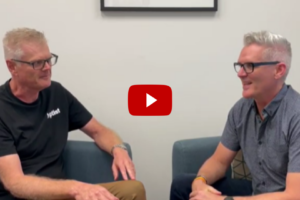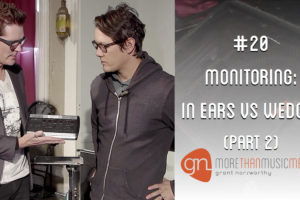Grant spoke with Dominic Schryvers from The Stations and the Gregorian Chat YouTube Channel about…
M3 VIDEO #9 – VOCALISTS: CREATING OUR UNIFIED VOICE
By Grant Norsworthy
Watch this short video. To understand the thought process behind the training video, read the blog post below it.
Watch this short video. To understand the thought process behind the training video, read the blog post below it.
The video above is #9 in the More Than Music Mentor training resource series.
What’s the melody?
Consciously or unconsciously, the congregation that is being invited to sing as an expression of worship is asking that question. For them to feel willing and able to sing, the question must be answered for them – and answered in clear and simple terms.
Most likely the congregation is reading the lyrics of the song on a screen, but the melody of how they should sing those words is guided by two things:
- their memory of how the song goes, and
- the leading vocalists – the singers on the platform with microphones.
Sadly, and far too often, the leading vocalists seem unsure of the answer to that question themselves! Without intentionally doing so, the leading vocalists might present a mash-up of several different interpretations of, and approaches to the same song’s melody.
Vocalists on microphones are often singing multiple variations of the song simultaneously. Their task is to lead and guide the congregation, but they actually create confusion. With the congregation being bombarded by different variations of the melody, we should not be surprised when they resist singing along.
The mistakes that I observe most by leading vocalists in this area are:
- sticking to a particular or preferred version of the melody, despite others singing a different version,
- too much variation of vocal style (formally trained, informal or “conversational” vocals, vibrato, “scooping”, slides, note length and so on) from one leading vocalist to another, and
- falling for the temptation of embellishing the melody with performance-style vocal self-expression.
People’s memory of exactly how the melody of a song goes can vary a great deal. There are often multiple versions of a single song’s melody floating around – especially songs that have been reinterpreted by multiple recording artists. There is no need for pointless discussion of which version of the melody is the correct one, but the leading vocalists must make sure that they are all very clear on what their melody is for any given song.
Additionally, all vocalists who are tasked with leading the congregation must have a clear distinction in their minds between this leading-a-congregation approach to singing and performance singing. A vocalist who is performing for an audience – who is primarily being listened to – is free to use all manner of techniques to add interest and self-expression to their singing, including (but not limited to) altering the melody, note length, use of vibrato, adding syncopation, intentionally singing around the beat.
But these techniques need to be set aside by those vocalists who are leading a congregation to sing as an expression of worship. The melody they present must be clean and simple if it is to invite the (presumably) less-capable singers in the congregation to sing also. Leading a congregation does not offer the same opportunity for artistic self-expression and concert-style creativity as singing for performance.
All this wasn’t a problem, of course, back in the days when the congregation were reading lyrics and notation from a hymnal … and could read the melody (and their harmony too if they wished). While it still happens a little, the notation-reading congregation is actually very rare today. And the percentage of people in the congregation who are able to read musical notation is usually very low anyway. I’m not suggesting we go back to that method, but it does show the need to be more intentional with our preparation when not even the leading vocalists are reading notation to be certain of the melody
The musical director of the band must dedicate sufficient rehearsal time to make sure the singers’ combined “voice” is unified – presenting one, clear melody that the congregation can sing along with. Step away from the microphones. Gather around just a piano or an acoustic guitar. Sing together. Really listen to one another’s melody. Pay close attention to the details. Hear any differences. Make adjustments. Find your unified voice.
To make an engaging invitation to the congregation, we must make sure that they are presented with a clear, singable melody. In my opinion, this is prerequisite to, and far more important than adding any harmony vocals.
Significant, beautiful, potentially powerful and even supernatural things can happen as gathered Believers worship God Almighty by singing songs of praise with one, unified voice. Let’s offer them the best possible invitation to do so.
Watch Video#9 – Vocalists: Creating Our Unified Voice again.
For more free resource videos and info, visit www.MoreThanMusicMentor.com.


